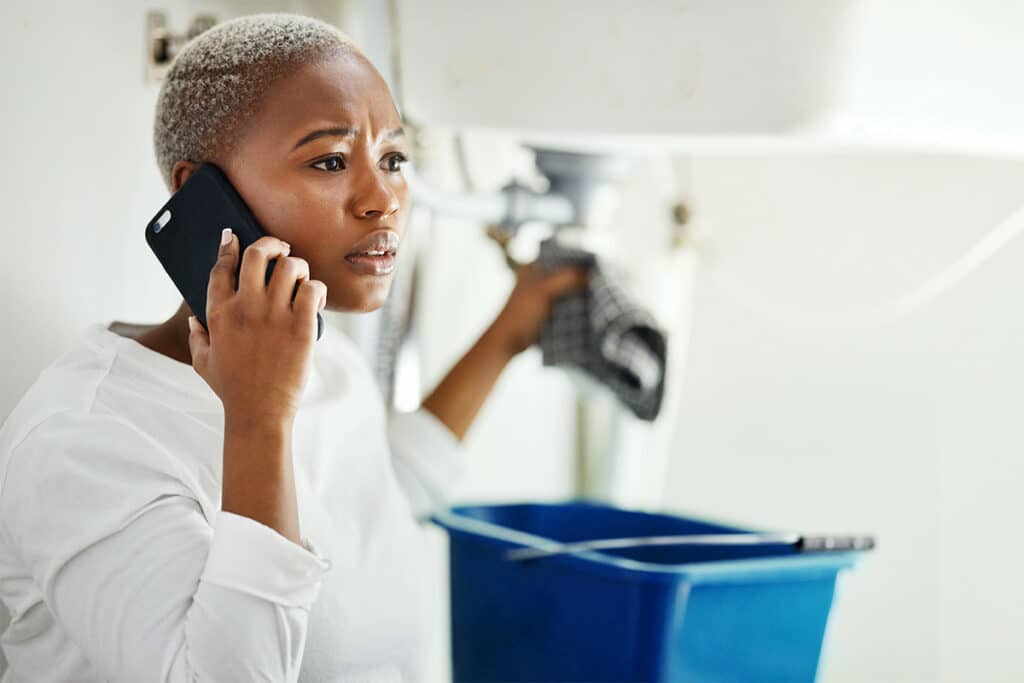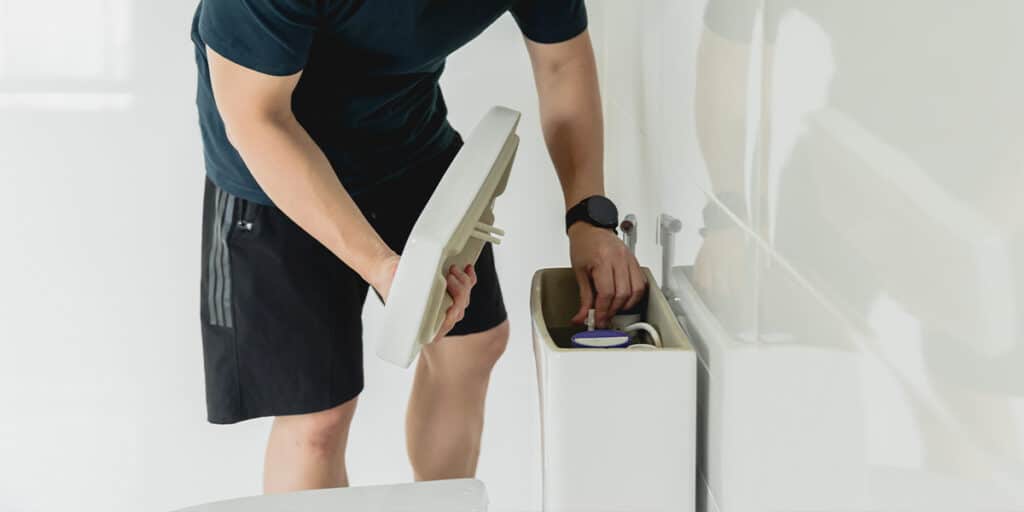Common Emergency Plumbing Issues and How to Handle Them
Emergencies can strike at any time, and plumbing problems are no exception. Whether it’s a burst pipe, a leaky faucet, or an overflowing toilet, knowing how to respond quickly and effectively can make all the difference. In this article, we’ll cover the most common emergency plumbing issues our Best Care Heating, Air Conditioning and Plumbing team sees and provide you with easy-to-follow steps to handle them. By the end, you’ll feel more confident in tackling these problems and knowing when it’s time to call in a professional plumber.

Common Emergency Plumbing Issues
Let’s dive into some of the most common plumbing emergencies you might encounter and how to deal with them.
Leaks
Leaks are one of the most frequent plumbing issues homeowners face. They can pop up anywhere in your plumbing system—whether it’s a dripping faucet, a leaking toilet, or a pipe hidden behind your walls. While a small drip might seem harmless, it can lead to big problems if left unattended. Over time, leaks can cause water damage, mold growth, and higher water bills.
Burst Pipes
A burst pipe is a serious problem that needs immediate attention. Pipes can burst due to freezing temperatures, high water pressure, or aging pipes. When a pipe bursts, it can release a lot of water quickly, leading to severe flooding and property damage. The best thing you can do is act fast to minimize the damage until a plumber arrives.
Overflowing Toilets
An overflowing toilet is a nightmare for any homeowner. Not only is it messy, but it can also be a health hazard. Overflowing toilets are usually caused by a blockage in the pipes or a malfunction in the toilet’s internal mechanisms. If not dealt with quickly, the problem can spread contaminated water throughout your home.
Assemble Your Emergency Plumbing Kit
Being prepared can save you a lot of stress during a plumbing emergency. That’s why every homeowner should have an Emergency Plumbing Kit ready to go. Here’s what you’ll need:
- Adjustable Wrench: This is a must-have tool for tightening and loosening pipe connections.
- Plunger: Essential for clearing clogs in toilets, sinks, and drains.
- Bucket: Handy for catching water from leaks or overflows.
- Towels or Rags: Useful for cleaning up spills or stopping the flow of water.
- Tape (Duct or Plumber’s Tape): Good for temporarily sealing minor leaks.
- Screwdriver: Helps with removing drain covers or disassembling faucets.
Having these tools on hand can make a huge difference when you’re faced with a plumbing emergency. Not only can they help you manage the situation, but they can also give you some peace of mind knowing you’re prepared.
Step-by-Step Guide for Emergency Plumbing Situations
When a plumbing emergency strikes, it’s important to stay calm and follow these steps.
Dealing with Leaks
- Identify the Source of the Leak: The first step is to find out where the leak is coming from. It could be a faucet, a pipe, or a toilet. Knowing the source will help you take the right action.
- Turn Off the Water Supply: Once you’ve identified the source, turn off the water supply to that fixture. If you’re unsure where the leak is or if it’s a big one, turn off the main water supply to your home.
- Contain the Leak: Use towels, buckets, or rags to catch any dripping water. This will help prevent further damage to your floors and walls.
- Apply Temporary Fixes: If it’s a small leak, you can use duct tape or plumber’s tape to temporarily seal it. Remember, this is just a temporary solution—calling a plumber is still necessary to fix the problem for good.
By following these steps, you can reduce the damage caused by a leak and keep things under control until help arrives.

Managing an Overflowing Toilet
- Stop the Overflow: The first thing you want to do is stop the water from flowing out of the toilet. You can do this by lifting the toilet tank lid and pushing down the flapper valve to stop the water.
- Use a Plunger: Once the overflow is stopped, try using a plunger to clear the blockage. Make sure the plunger is securely placed over the drain and push down firmly before lifting up. Repeat this a few times to see if it clears the clog.
- Avoid Chemical Drain Cleaners: While it might be tempting to use a chemical cleaner, it’s better to avoid them. These products can be harmful to your pipes and can cause more damage than good.
- Call a Professional: If the clog persists, it’s time to call in a plumber. Persistent clogs might indicate a bigger issue that needs professional attention.
Handling an overflowing toilet quickly can prevent a small problem from turning into a big mess. Just remember to keep safety in mind and know when to call for help.
Dealing with Burst Pipes
- Recognize the Signs: Burst pipes are usually easy to spot. Look for water spraying from a specific area, water stains on your walls or ceilings, or an unusually high water bill.
- Turn Off the Main Water Supply: If you suspect a burst pipe, turn off the main water supply to your house. This will stop more water from flowing out and causing damage.
- Drain the Water: Open all your faucets to drain the remaining water in your pipes. This will relieve any pressure and reduce the risk of more pipes bursting.
- Contain the Water: Use buckets, towels, and rags to manage the water and prevent further damage to your home.
- Call an Emergency Plumber: Burst pipes are a serious issue that requires immediate professional attention. Call an emergency plumber right away to repair the damage and prevent future problems.
Dealing with a burst pipe can be overwhelming, but taking these steps can help you minimize the damage and protect your home.
When to Call a Professional Plumber
While there are some plumbing problems you can handle on your own, there are times when it’s best to call in a professional. Here are a few situations where you’ll definitely want to pick up the phone:
- Persistent Leaks: If you’ve tried to fix a leak, but it keeps coming back, it’s time to call a plumber. Persistent leaks can lead to bigger issues down the road.
- Recurring Clogs: If you’re dealing with clogs that keep coming back, it might be a sign of a bigger problem in your plumbing system.
- Low Water Pressure: If you’re noticing low water pressure throughout your home, it could be a sign of a hidden leak or a problem with your pipes.
- Major Plumbing Emergencies: Burst pipes, sewage backups, and major leaks are all reasons to call an emergency plumber right away.
Having a reliable plumber’s number on hand is essential. You never know when you’ll need professional help, so it’s a good idea to do some research now and find a plumber you can trust.
Need an Emergency Plumber?
Plumbing emergencies can be stressful, but knowing how to handle them can make a big difference. Whether it’s a leak, a burst pipe, or an overflowing toilet, taking quick action can help you minimize damage and keep your home safe. However, there are times when it’s best to call in the professionals.
At Best Care Heating, Air Conditioning, and Plumbing, we’re here for you 24/7. If you’re facing a plumbing emergency, don’t hesitate to reach out. Call us anytime at 901-624-1401, or fill out our contact form to schedule a service. We’re committed to providing top-notch plumbing services that keep your home safe and comfortable. Trust Best Care to handle your plumbing emergencies with expertise and care.
Emergency Plumbing Tips Menu
Recent Posts
Top 7 Generac Generator Error Codes and What They Mean
If you own a Generac home standby generator, you may eventually see a fault code on the controller screen—often accompanied by a red...
What Does the Generac Generator Red Light Mean? 5 Top Reasons
If your Generac home standby generator has a red light on the control panel, it’s a clear signal that something is wrong—and your...
What is the Generac Error Code 2800?
If your Generac home standby generator is displaying Error Code 2800, it’s signaling an auxiliary shutdown condition. This typically means an external emergency...



